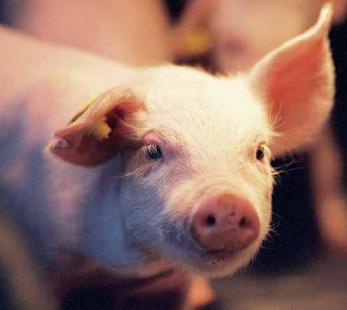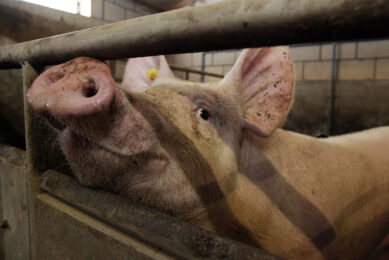Replacing whey protein concentrate in piglet diets

Whey protein concentrate, or WPC as it is known in the commercial world, is a very important ingredient featured in many piglet formulas, sometimes as the only source of milk protein. High prices drive the search for good alternatives to replace WPC. However, this is not as easy as it seems. In this article we explain the current possibilities.
By Ioannis Mavromichalis*
The crude protein concentration in WPC varies greatly from 30 to 80%, depending on the level of lactose and ash extraction. The high protein variety, or WPC80, is the most common and we will focus our discussion on this ingredient. Fierce competition from the human food industry drives worldwide prices for WPC up constantly because this dairy ingredient is used in candy bars (due to its high palatability) and in sports (body-building) supplements (due to its high amino acid digestibility). Thus, alternatives are frequently attempted, but often fail, because the replacement is made on a protein (or amino acids) basis without taking into account the multi-faced attributes of WPC. We will examine these issues in order below.
High protein content
The protein content of WPC is of extremely high digestibility, reaching or exceeding 90% when the product is properly dried to avoid protein damage due to maillard reaction. It is rich in lysine, threonine, valine, and isoleucine, but relatively low in threonine, methionine and cysteine. Table 1 presents the relative nutritive value of protein in WPC80 and soybean meal (a common protein source in pig diets worldwide).
It is apparent, compared to the requirements of a piglet, that WPC is a near ideal protein with slight deficiencies that can be covered easily by synthetic methionine (which can also cover the cysteine requirement).
Thus, when removing WPC from a piglet formula, it is methionine that must be carefully balanced first to avoid a deficiency, with tryptophan being second in importance. Alternative proteins that can cover the supply of amino acids offered by WPC include mostly products of vegetable origin. Such products are wheat gluten, pea protein, potato protein, soy protein concentrate, and rice protein. All of these proteins can be equally high in protein content (ranging from 70 to 80 or above) and of equally high digestibility (in high quality products treated properly). Some of these ingredients come with their own problems and as such a blend is often recommended when they are to constitute more than 5% of the total diet. All require careful balancing for amino acids.
Varieties exist offering a low concentration in anti-nutritional factors, such as glucoalkaloids in potato protein, and these must always be preferred when inclusion level exceeds 5% of the final diet.
Where still permitted, meat meal, fish meal, and poultry meal can contribute towards meeting the amino acids needed in replacing WPC, but these ingredients can be only of the highest possible quality in order to match the digestibility of WPC protein.
Palatability is a problem
This is a factor often overlooked when replacing WPC. Vegetable proteins have a very blunt taste, whereas WPC is extremely tasty and palatable. As such, when WPC is one of the few or even the only ingredient in a formula that imparts a favourable taste, its replacement by a vegetable protein will reduce acceptance of the diet given all other factors remain similar.
This effect will be more pronounced in formulas where the favourable taste of WPC was masking an unpleasant (perhaps bitter or stale or oxidized) taste derived from other ingredients, including some medicines and other additives. Thus, a rebalancing of other dairy proteins in the feed is essential. If WPC is the only dairy ingredient used, then another palatable ingredient, such as sucrose, may be used.
Failing that, a flavour can be used, but as these products have a tremendous variability in effectiveness, this requires a very careful selection. It should be noted that in most cases, piglets will not observe the difference in taste when diets are based on cooked cereals and extruded soybeans as these ingredients easily mask the taste of other raw materials due to their usual high inclusion level in the diet. Diets rich in oils and fats also do not benefit from changes in perceived taste from the addition of palatability enhancers because lipids enhance the taste effect of other palatable ingredients, if such exist in a formula.
Pellet quality
This is a hardly known fact, at least outside the feed manufacturing world, but WPC does cause pellets to become harder. A 10% inclusion level of WPC might actually produce pellets so hard that feed intake in weaned piglets can be severely reduced. Of course, this is not a factor in meal diets. Thus, when WPC is removed from a formula, and WPC was the only ingredient enhancing the durability aspects of pellets produced from this formula, care must be taken to replace this attribute from other sources.
The easiest way, if the formula contains such ingredient, is to increase the level of wheat against that of other cereals. Perhaps, a small increase in crude fiber should also be considered, in very-low fiber diets, to provide extra strength to the pellets, or at least a pellet binder can be included as a last resort. Failing to account for the drop in pellet quality, when a high concentration of WPC is removed from a piglet formula, can lead to pellet quality deterioration as a result of more fines and smaller (broken) pellets. And, although piglets are not likely to complain much, our customers will certainly do!
Lactose content
Whey protein concentrate contains a residual amount of lactose, which is about 5% in WPC80. If WPC80 is the only source of lactose in a formula, and WPC80 makes more than 5% of the final feed (contributing at least 0.25% lactose), this amount should be replaced with lactose or sucrose. This is a very unlikely situation, but it happens! Of course, when a WPC product with lower protein and more lactose is replaced, then the naturally higher lactose contribution should always be compensated. Nevertheless, in most formulas, WPC80 is used for its protein and not its lactose content. As such, and assuming the diet contains a minimal level of lactose from other sources, the lactose contribution of WPC80 is not deemed significant enough to merit replacement.
Low level of immunoglobulins
Few realize that whey, in general, is a source of immunoglobulins. As a quick reminder, ingested immunoglobulins offer protection against pathogens in the lumen and as such enhance animal performance.
They are found in milk (especially in colostrum), blood, and of course, eggs, and as such they are a natural “antibiotic”. Whey powder (11% protein) contains a very low level of immunoglobulins (about 3%), and these bovine immunoglobulins are of a rather weak nature (as they are not specific against piglet pathogens).
Nevertheless, in a concentrated product like WPC, where the protein is as much as seven to eight times higher than in whey powder, the immunoglobulin concentration can easily exceed 20%, and this is not insignificant. When WPC is the only source of immunoglobulins in a diet and it is subsequently replaced by a vegetable protein, then it is logical to expect some drop in performance, especially in piglets of moderate to low-health status.
The alternative sources of immunoglobulins are animal plasma and hyper-immunized egg protein, both rich but quite different. Plasma is more expensive and of quite variable composition, with a rather generic make up of immunoglobulins. The more sophisticated egg-derived immunoglobulins are less expensive and at the same time more effective as they target pathogens of specific interest during the period around weaning.
Conclusion
Replacing whey protein concentrate in a piglet formula is not as easy as it appears to be in the first place. Not only the protein contribution of this ingredient must be matched by other equally digestible ingredients, but secondary aspects must also be considered. The issues of palatability, pellet quality, and immunoglobulin support must be addressed with equal importance. For this, the whole diet must be considered and other ingredients and nutrients rebalanced to assure piglet performance and health without sacrificing product quality and sales.
* Ioannis owns the company Ariston Nutrition SL, Nutrition & Consultancy (www.ariston-nutition.com)
Feed Tech Vol. 13 No. 2
Join 26,000+ subscribers
Subscribe to our newsletter to stay updated about all the need-to-know content in the feed sector, three times a week. Beheer
Beheer









 WP Admin
WP Admin  Bewerk bericht
Bewerk bericht